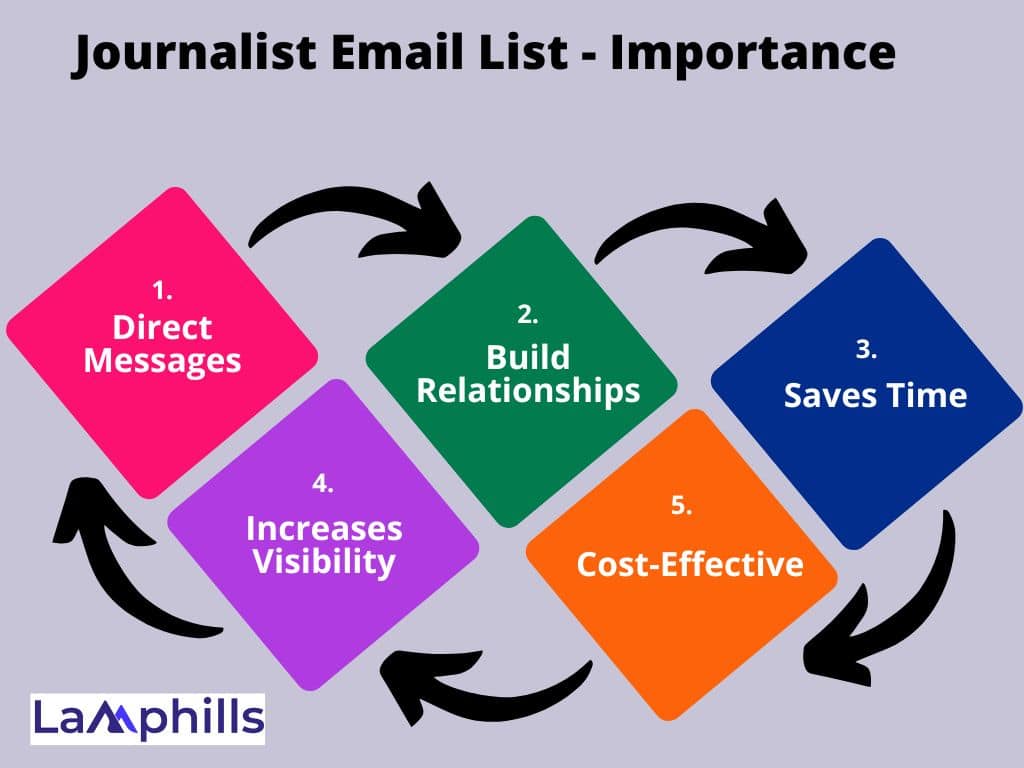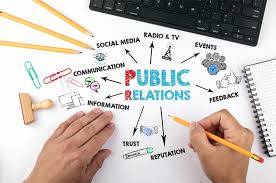A journalist email list is a list of email addresses of journalists who might be interested in your story. When you want to share news or stories about your business or project, reaching out to journalists can help. It is, therefore, a valuable tool for anyone looking to promote their news and reach a wider audience.
If you want to contact reporters or other media people to get coverage, you need to know how to: 1. Find journalists who might be interested in your story. 2. Get their email addresses or other contact info. You also need to have a story that’s worth writing about and know how to write an interesting media pitch.
In this guide, you’ll learn the best tools and methods to find journalists and their contact information, so you can create a press email list and pitch your story.
Key Points
- A journalist email list is crucial for PR outreach, as it provides direct access to journalists who might be interested in your story. This focused approach increases the likelihood of getting media coverage, saving time, and building professional relationships.
- To create an effective journalist email list, identify target journalists, research their contact information using tools like Cision and Muck Rack, and organize this data in a spreadsheet. Regularly update the list to ensure accuracy and relevance.
- A compelling pitch requires a strong subject line, personalized content, and clear, concise information about why the story is newsworthy. Personalizing the pitch by referencing the journalist’s previous work and providing supporting information enhances its effectiveness.
- Timing is key to successful outreach. Send pitches early in the morning or just after lunch, avoiding Fridays and holidays. Understanding the journalist’s news cycle and deadlines can improve the chances of your pitch being noticed.
- Following up politely after a few days and tracking outreach efforts using a CRM tool or spreadsheet helps stay organized and improve success rates. Measure success by responses, coverage, and relationships built, and be ready to adjust strategies as needed.
Understanding Journalist Email List and Why It’s Important
The first step in good PR outreach is knowing what a journalist’s email list is and why it’s important. Think of it as your key to the media world. Journalists get tons of pitches every day, so having their email addresses helps you reach them directly.

A Journalist Email List is a collection of email addresses belonging to journalists. Companies, organizations, and public relations (PR) professionals use these lists to share news, press releases, and important updates with journalists. The goal is to get media coverage for their stories or events. By having direct contact with journalists, they can increase the chances of their news being published in newspapers, magazines, websites, and other media outlets.
The first time I tried PR outreach. It was really scary, and there was so much information that I didn’t know where to start. A client had just launched a startup, and getting media coverage felt like a big deal. After many mistakes and long nights writing pitches, I found something amazing: the journalist email list. This simple tool changed everything for me. I will show you how you can use it to succeed in your PR outreach, just like I did.
Note: It’s not just about having a list of names and emails; it’s about having a list of the right journalists for your industry. This focused approach saves time and increases your chances of getting noticed.
Read Also: Building A Strong Relationship with Journalists: Mastering Media Relations
Why is a Journalist Email List Important for Outreach

A journalist email list is important for outreach because it helps you connect with journalists who can share your news, stories, and updates with a broad audience. Here’s why it’s important:
#1. Direct Messages: Instead of sending your information to random people, you can send it directly to journalists who are interested in your topic. This increases the chances that they will read and use your information.
#2. Build Relationships: Having a list of journalists means you can regularly update them with your news. Over time, they will recognize your name and trust you as a reliable source.
#3. Saves Time: With a ready-made list, you don’t have to search for journalists every time you have news to share. This makes your outreach faster and more efficient.
#4. Increases Visibility: Journalists can help spread your message to a large audience. When they write about your news, it can be seen by thousands or even millions of people.
#5. Cost-Effective: Emailing is an affordable way to reach out to journalists compared to other forms of advertising or promotion.
#6. Professional Appearance: Using a journalist email list shows that you are organized and serious about your outreach efforts. Journalists are more likely to pay attention to well-targeted and professional communications.
In summary, a journalist email list helps you efficiently and effectively share your news with the right people, build strong professional relationships, save time, and increase your visibility.
How to Build Your Journalist Email List
Building a good journalist email list takes some work. Start by finding journalists who cover your industry. Use tools like Cision, Muck Rack, or even Twitter to find them. Pay attention to what they write about and if they interact with topics similar to yours.
When I started, I spent hours online, making a list with names, emails, and notes about their recent articles. It was a lot of work, but it was worth it. Remember, making your pitches personal is key. The more you know about a journalist, the better your pitch will be.
Here are easy steps to help you get started:
By following these steps, you can make a focused and updated list that improves your chances of getting media attention. Here are the steps to help you do it.
#1. Identify Your Target Journalists: Think about what kind of news or stories your business or project fits into. Find journalists who write about these topics.
#2. Research Journalists: Use Google to search for articles related to your topic. Note down the names of the journalists who wrote these articles.
#3. Find Contact Information: Visit the websites of the newspapers or magazines where these journalists work. Look for the “Contact Us” or “About” pages to find their email addresses. Sometimes you can find their emails in their articles or author bio sections.
#4. Use Social Media: Follow these journalists on platforms like Twitter and LinkedIn. Sometimes they list their email addresses in their profiles or share them in their posts.
#5. Subscribe to Press Databases: Use tools like Muck Rack or Cision, which have databases of journalists and their contact information. These services often require a subscription.
#6. Organize Your List: Create a spreadsheet using a program like Excel or Google Sheets. Make columns for the journalist’s name, email, the outlet they work for, and the topics they cover.
#7. Verify and Update Regularly: Check that the email addresses you have are correct and still in use. Update your list regularly as journalists can change jobs or beats.
By following these steps, you can build a targeted list of journalists to reach out to for your PR efforts.
After building your journalist email list, the next focus is to craft a perfect pitch. This means making your message clear, engaging, and relevant. Let me show you how you can achieve that.
Crafting the Perfect Pitch

A journalist email list is only useful if you send a good pitch. Your email needs to stand out. Start with a subject line that grabs attention. Instead of “New Startup Launch,” try “A Bold New Tech Startup Changing the Game.” Keep your email short and to the point. Introduce yourself, explain why your story is interesting, and why it matters to their readers. Personalize it by mentioning their previous work. I once got a story covered just by referencing an article the journalist had written and explaining how my story was a perfect follow-up.
Here’s a step-by-step guide to achieve this:
#1. Research the Journalist: Find out what topics they write about and understand their audience and interests. This helps you tailor your pitch to their specific needs and preferences.
#2. Create a Compelling Subject Line: Keep it short and attention-grabbing. Make sure it is relevant to the journalist’s beat, which is the main topic they write about.
#3. Personalize the Email: Use the journalist’s name and mention something specific about their work. This shows that you’ve done your homework and makes your email stand out.
#4. Start with a Strong Opening: Introduce yourself briefly and immediately state why your story is relevant to them. A strong opening grabs their attention right away.
#5. Present Your Story Clearly: Explain the main points of your story in a few sentences. Highlight why it’s newsworthy and interesting to their readers.
#6. Provide Supporting Information: Include facts, statistics, or quotes that strengthen your pitch. Offer to provide more information or an interview if needed.
#7. Keep It Concise: Be brief and to the point. Avoid long paragraphs and, if necessary, use bullet points to organize your information.
#8. Include Contact Information: Make it easy for the journalist to reach you by including your phone number, email address, and any relevant social media handles.
#9. Proofread Your Email: Check for spelling and grammar mistakes to ensure the email looks professional. A well-written email reflects well on you and your story.
#10. Follow-up: If you don’t hear back in a week, send a polite follow-up email. Be respectful of their time and busy schedules, and remind them of your initial pitch.
By following these steps and using a clear, engaging approach, you can create a pitch that captures a journalist’s attention and increases your chances of getting your story covered.
Here’s a media pitch template and a written example.
Timing Your Pitch
Journalists work on tight schedules, so timing your pitch is very important. Send your emails early in the morning or just after lunch when they are more likely to check their inbox. Avoid sending pitches on Fridays or before holidays when your email might get lost. When I first started, I sent pitches late in the day, and they often went unanswered. Changing my timing improved my response rate a lot.
Timing your pitch means choosing the best time to send your message to journalists. Here are some key points to consider:
#1. Know the News Cycle: Journalists have busy times and slower times. Avoid sending pitches during busy news periods, like major holidays or big events.
#2. Consider Deadlines: Journalists often have deadlines. Try to send your pitch when they have more time to read it, like in the morning or early in the week.
#3. Think About Relevance: Send your pitch when your news is most relevant. For example, if you have a seasonal product, pitch it a few weeks before that season starts.
#4. Follow-up: If you don’t hear back, follow up after a few days. Be polite and remind them about your pitch.
By timing your pitch well, you increase the chances of getting noticed and covered by journalists.
Bonus Tips To Consider When Using a Journalist Email List for Outreach Success
#1. Following Up Without Being Annoying
Follow-up emails are important, but you need to do them right. Wait a few days before sending a polite follow-up. In your follow-up, repeat the key points of your original pitch and show your excitement about working with them. Don’t be pushy or send too many follow-ups quickly. Persistence is important but respect their time. I found that a well-timed, polite follow-up often got a response, even if the first email was missed.
#2. Tracking Your Outreach
Keep track of your outreach efforts. Use a CRM tool or a simple spreadsheet to note who you’ve contacted, when you sent your pitch, and any responses you got. This helps you stay organized and avoid sending duplicate emails. It also gives you useful insights into what works and what doesn’t. Over time, you’ll see patterns and can improve your approach. I started using HubSpot to manage my PR outreach, and it made a big difference in my efficiency and success.
#3. Measuring Success and Adjusting Your Strategy
Success in PR outreach isn’t just about getting one story published; it’s about building relationships with journalists over time. Measure your success by the responses you get, the coverage you receive, and the relationships you build. If something isn’t working, don’t be afraid to change your strategy. Maybe your pitch needs tweaking, or perhaps you need to target different journalists. The key is to stay flexible and keep improving your approach. Each round of outreach taught me something new, leading to better results.
Wrap Up
Using a journalist email list for PR outreach can seem overwhelming at first, but with the right approach, it can be very effective. It’s about building the right list, crafting good pitches, timing your outreach, and following up properly. By tracking your efforts and adjusting your strategy, you’ll improve your chances of success. Remember, PR is a long game, and persistence pays off.
Answers to Frequently Asked Questions
How do you email a journalist?
When you need to share news with a journalist, it’s important to be clear and concise. Follow these steps to email a journalist:
- Look for journalists who write about topics related to your news or story. This will make them more interested in what you have to say.
- You can often find a journalist’s email address on their publication’s website, their social media profiles, or in a media directory.
- The subject line should quickly tell the journalist what your email is about. Make it interesting but straightforward, like “Exciting New Product Launch” or “Exclusive Interview Opportunity.”
- Use the journalist’s name at the beginning of your email. It shows that you’ve done your homework and are specifically reaching out to them.
- Briefly tell them who you are and why you’re reaching out. Mention any relevant credentials or connections.
- Quickly explain what your news is and why it’s important. Journalists receive many emails, so be concise and clear.
- Include important information like dates, facts, and figures. If you have a press release, attach it or include a link to it.
- If possible, offer them an exclusive story or a unique angle that will make your news more appealing.
- Let the journalist know that you’re available for any questions or additional information. Provide your contact details.
- Always thank the journalist for their time and consideration at the end of your email.
- Before sending, double-check your email for any spelling or grammar mistakes.
By following these steps, you can create a professional and compelling email that grabs a journalist’s attention.
How do I find a journalist’s email?
To find a journalist’s email, first, check their articles online; sometimes, their email is listed there. You can also look at the “Contact” or “About” sections on the websites where they work. Another way is to use social media; journalists often share their contact info there. Lastly, you can use tools like Hunter.io or Voila Norbert to find their email addresses.
How many emails do journalists get?
Journalists get a lot of emails from PR people, sometimes 20-30 emails a day. In our monthly Q&A with journalists, they say they receive many pitches, and most of them aren’t very good.
How do I contact journalists?
To contact journalists, first, find their email address on their website or social media. Write a clear and short email about your news or story idea. Make sure your email is interesting and relevant to what they usually write about. Follow up politely if you don’t hear back after a week.
Related Articles
Easy PR Lists to Get On: A Minimal Effort Guide for Influencers
How to Create an Efficient Media Contact List: My Templates & All You Need
Building A Strong Relationship with Journalists: Mastering Media Relations






